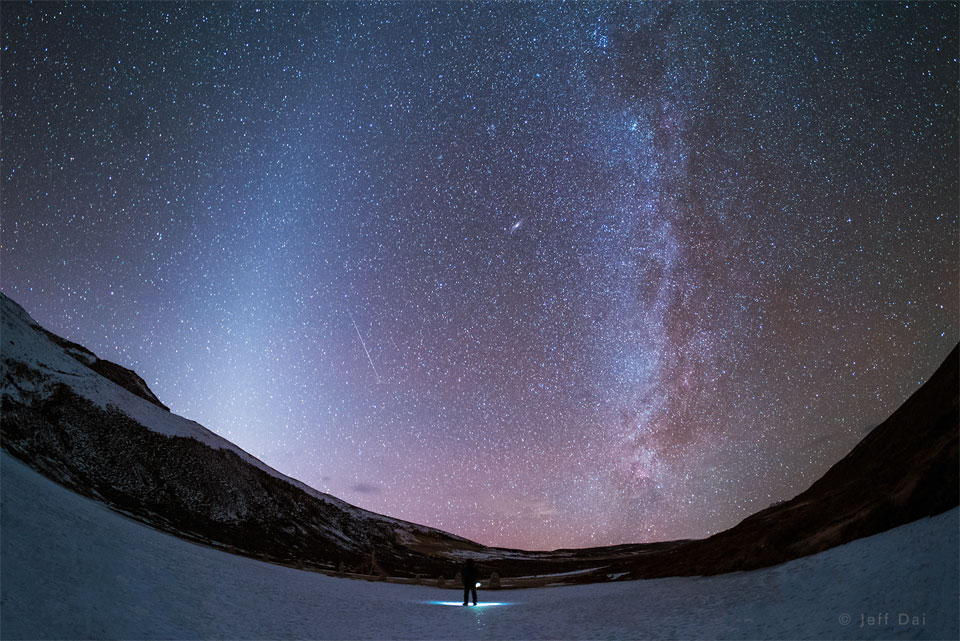2022年3月1日
Dueling Bands in the Night
Image Credit & Copyright: Jeff Dai (TWAN)
Explanation: What are these two bands in the sky? The more commonly seen band is the one on the right and is the central band of our Milky Way galaxy. Our Sun orbits in the disk of this spiral galaxy, so that from inside, this disk appears as a band of comparable brightness all the way around the sky. The Milky Way band can also be seen all year — if out away from city lights. The less commonly seem band, on the left, is zodiacal light — sunlight reflected from dust orbiting the Sun in our Solar System. Zodiacal light is brightest near the Sun and so is best seen just before sunrise or just after sunset. On some evenings in the north, particularly during the months of March and April, this ribbon of zodiacal light can appear quite prominent after sunset. It was determined only this century that zodiacal dust was mostly expelled by comets that have passed near Jupiter. Only on certain times of the year will the two bands be seen side by side, in parts of the sky, like this. The featured image, including the Andromeda galaxy and a meteor, was captured in late January over a frozen lake in Kanding, Sichuan, China.
Tomorrow’s picture: it came from the sun
夜空中的银河和黄道光
影像提供与版权: Jeff Dai (戴建峰) (TWAN)
说明: 天空中这二道光带是什么?其中较常见者为右侧的光带,它是我们银河系的中央盘面。因为我们太阳于此螺旋星系里公转的轨道在盘面之内,所以从太阳系内看出去,这个盘面看来像是横贯天际、亮度均一的光带。故在远离都市灯火干扰之处,银河的盘面终年可见。影像中较罕见的光带是左侧的黄道光,源自阳光从太阳系里绕行太阳的尘埃反射所致。临近太阳区域的黄道光最为明亮,所以观看黄道光的最佳时段在日出前或日落后。在北半球的某些夜晚(特别是在三月和四月),日落后常可见到很明亮的黄道光。然而科学家直到这个世纪,才确定黄道光尘埃的主要来源是近距离通过木星附近的彗星。只有在每年的某段期间,夜空中的这二道光带才会如此图所示几乎并排。这幅也同时捕捉到仙女座星系及一颗流星的主题影像,是在今年一月底摄于中国四川省康定县的一座冰湖附近。
明日的图片: it came from the sun







